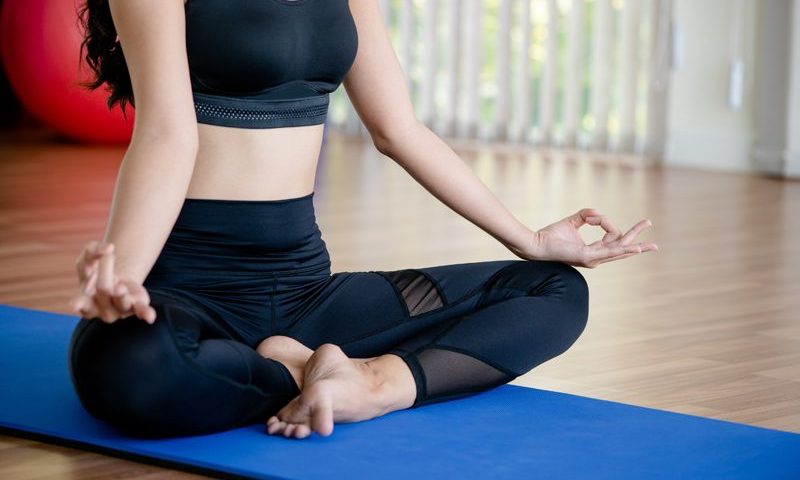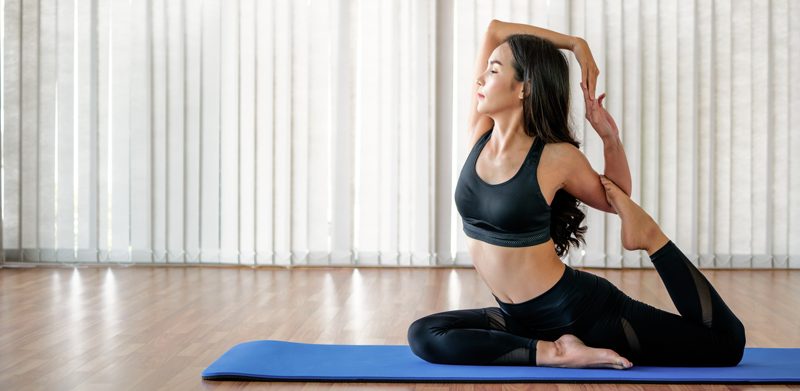
Tips to Cultivate Self-Love
3rd May 2019
What Does a Yogi and a Yogini Look Like?
9th May 2019Functional Movement and How Yoga Supports it

If we were just a skeleton of moving parts, a lifetime of efficient and effortless movement would be possible. Unfortunately, that is not the case. Instead, we have multiple layers of connective tissue that moves as we do. Over time, this tissue forms patterns of movement based on our habits and conditioning. Once we have settled into these patterns, it’s not uncommon for our function to be compromised and efficiency to be reduced. Before long, the movement that was once effortless becomes nothing short of hard work.
Thankfully, yoga can support functional movement and help us to intelligently and systematically strengthen, stretch and mobilise. Over time, this will enable us to move freely once more. If you’re hoping to use yoga to support functional movement, put on your yoga bra and keep reading.
What is Functional Movement?
Functional movement is any movement based on real-world situational biomechanics. As humans, we are naturally lazy. Instead of moving in the most efficient way, it’s common to opt for the easiest. Often, this leads to multi-planar, multi-joint movements that place stress on the body’s core muscles.
There are three planes of movement in the human body: coronal, which focusses on abduction and adduction; sagittal, which supports flexion and extension; and transverse, which focusses on rotation. During day-to-day life, we often operate in only one or two planes of movement. Often, these are carried out in the forward flexion portion of the sagittal plane.
When using yoga to support functional movement, an intelligently sequenced class will stretch, strengthen, and mobilise all planes of movement and encourage them to work as one. During certain asanas, we are required to be in all three planes of movement simultaneously. Regardless of how experienced you are at the practice, there are always more muscles to strengthen, joints to stabilise, bones to align, and fascia to unwind.
Functional Movement Reduction
During yoga, many yogis seek balance. The ultimate goal is to have an equal level of strength and suppleness on both sides of the body. If possible, we want to achieve this in all areas of movement in the body. The main areas of movement include six movements of the spine, scapula, humorous and femur; four movements of the wrist and ankle; and 2 movements of the knee and elbow. When using all of these movements, we engage all three planes of movement.
As mentioned earlier, functional movement can be reduced over time. Often, this reduction is acquired through physical or psychological habitual patterns or trauma. Below, we explore the most common functional movement impairments caused by habitual patterns.
Areas Where Function is Commonly Reduced
1. Misalignment in the Shoulder Girdle
The first movement impairment caused by habitual patterns is misalignment in the shoulder girdle. Typically, this is caused by prolonged computer work. When sitting at a desk for a long duration, internal rotation of the humorous with elevation/abduction of the scapula can occur. Carrying a bag on one shoulder can also cause misalignment; in this case, one shoulder blade will be higher than the other. Misalignment in the shoulder girdle can cause weakness, tightness, limited range of motion, and instability in the shoulders.
2. Elevated Hip
When elevated hip occurs, one hip becomes more elevated than the other. This is often caused by holding a child on one side, crossing the same leg while sitting on a chair, or leaning for long periods of time while sitting or driving. Elevated hip can result in weakness, tightness, limited range of motion, and instability in the lower back, hip, leg, or SI joint.
3. Rotated Spine
Rotated spine can be caused by sleeping on the stomach turned to one side. It can also be caused by long-term turning in one direction for sport or work. The sports that often result in rotated spine are tennis, one arm rowing, and golf. Rotated spine can result in weakness, tightness, limited range of motion and instability in one direction of the spine, neck, ribcage, and SI joint.

4. Kyphotic Thoracic Spine
Kyphotic Thoracic Spine is excessive rounding of the upper back. This is most commonly caused by bike riding, gaming, and prolonged computer work. Kyphotic Thoracic Spine can result in weakness, tightness, limited range of motion, and instability in the core.
5. Lordotic Cervical or Lumbar Spine
Lordotic Cervical is excessive curving in the neck and lower back. The problem is often caused by staring at mobile devices, staring at the road whilst cycling, looking forward whilst swimming, and the prolonged wearing of high heels. The issue can result in weakness, tightness, limited range of motion, and instability in the lower back, diaphragm, SI joint, hips, and legs.
Functional Movement Screening (FMS) and Yoga
In the fitness world, a functional movement screening test (FMS) may be carried out before participating in a specific sport or activity. Made up of seven parts, the test flags up imbalances, weaknesses, and asymmetries in the body to identify areas susceptible to injury. Screening tests are also used by chiropractors and physical therapists to help formulate a recovery plan with balance as the ultimate goal.
The seven tests in the screening are: hurdle step, deep squat, in-line lunge, active straight-leg raise, shoulder mobility, rotational stability, and trunk stability push up.
Yoga Asanas that Mimic the 7 FMS tests
- Hurdle Step: Marching-in-Place
- Deep Squat: Chair Pose
- In-line Lunge: High Lunge or Warrior Three
- Active Straight-Leg Raise: Yoga Straight-Leg Raise
- Shoulder Mobility: Cow-Faced Pose
- Rational Stability: Opposite Arm and Leg Table-Top
- Trunk Stability: High Plank
How Does Yoga Support Functional Movement?
As you may know, the asanas above are performed in almost every yoga class. If you struggle with any of them, your functional movement may be reduced in that area. With the help of your instructor, you can work on strengthening and stretching the affected areas to increase mobility. An intelligently constructed yoga class will ensure all three planes of movement are used equally. This means that an equal amount of backward bending, forward bending, side bending, adduction, abduction, and internal and external rotation will be used. Over time, this will diminish unhealthy habits and promote functional movement.
In Summary
If you’re looking to support functional movement, attend a reputable yoga class. Providing that the class is intelligently constructed, it will support functional movement and promote stability and mobility in the body. As warmer weather approaches, many classes are moving outside. If you attend an outdoor session, remember to wear a yoga cap and a good quality SPF.

